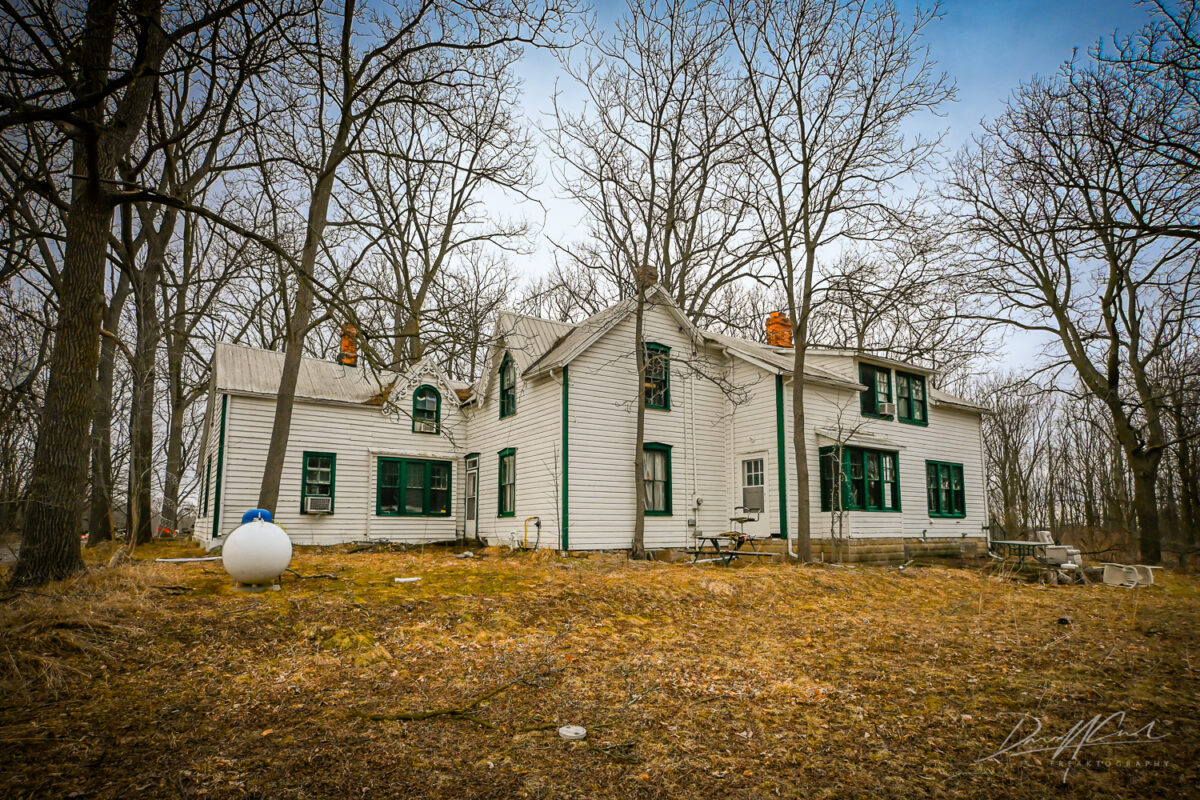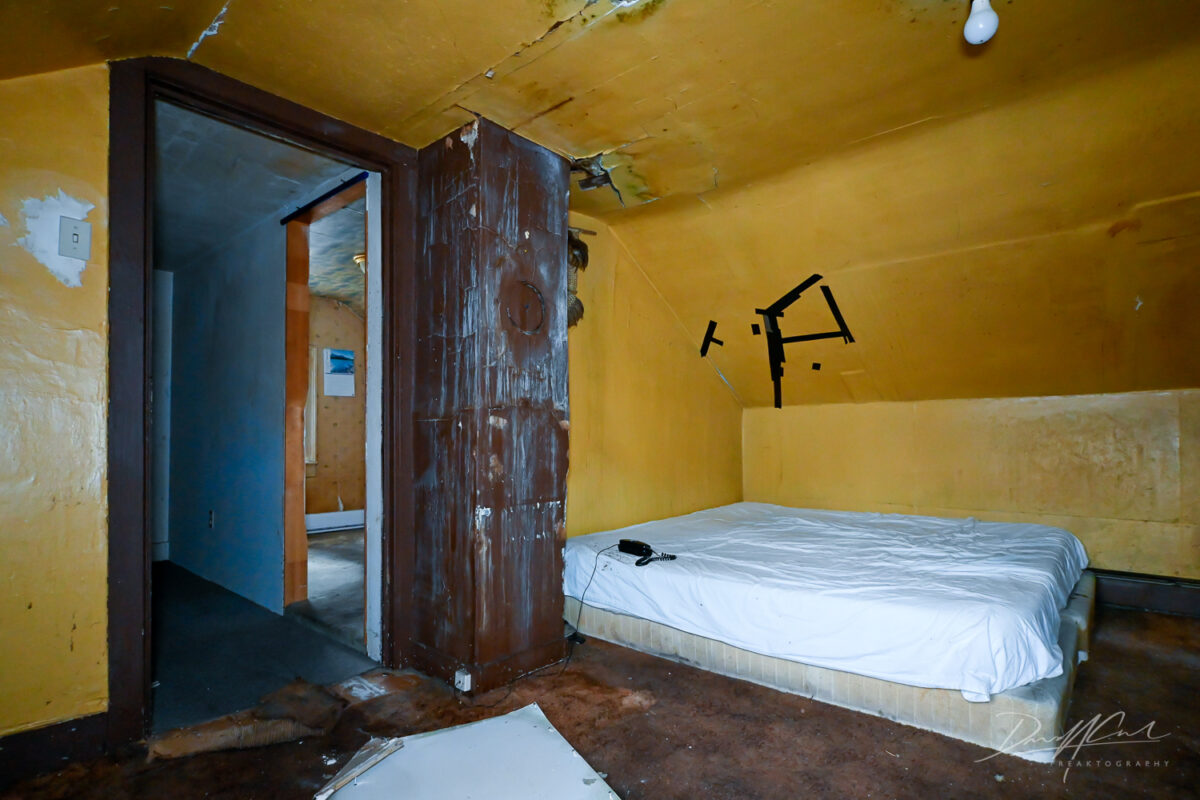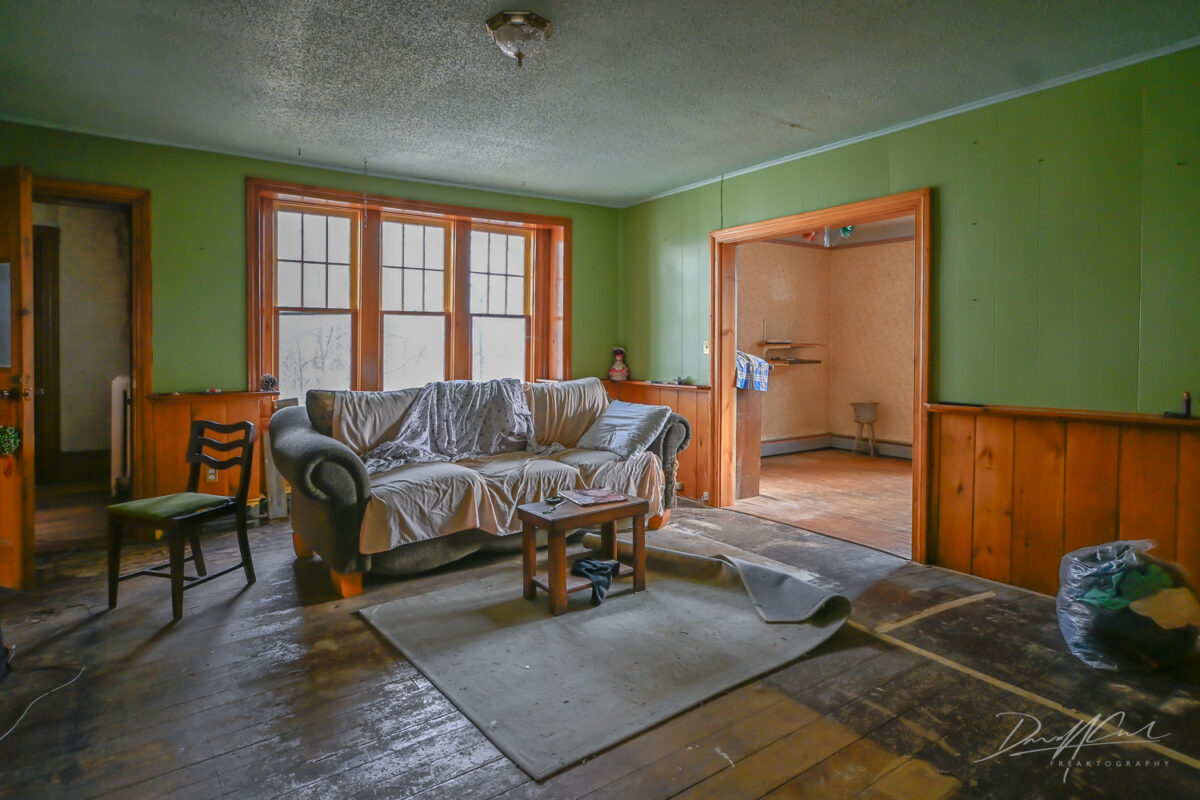Exploring the Forgotten History of a 19th Century Farmhouse
Tucked away on a quiet, overgrown lot along one of Ontario’s oldest transportation routes stands a forgotten piece of history. Hidden behind years of neglect and surrounded by encroaching development, the abandoned house that once stood proud is now barely a shadow of its former self. But this modest rural home, though crumbling, still whispers stories of a time long gone.

A Home Built on History
Constructed around 1890, this 1.5-storey red brick farmhouse was designed in a vernacular Gothic Revival style, complete with a steeply pitched front gable roof and a symmetrical façade. This architectural style was common for rural Ontario homes in the late 19th century, appreciated for its blend of elegance and practicality.
The home stood along what was once a key colonial route in early Upper Canada—it served as a vital military and trade artery, connecting early settlements across the province.
A Glimpse into Rural Life
When the house was built, the surrounding area was predominantly agricultural, dotted with farms and tight-knit communities. The families who lived here likely worked the land, contributed to the local economy, and witnessed decades of change—both in the world around them and within their own four walls.
Over generations, the house remained a symbol of rural resilience. Despite various modifications and additions, much of its original craftsmanship survived well into the 21st century, even as the world outside shifted dramatically from farmland to modern suburbia.


A Site of Transition
Today, the property lies within the boundaries of a large redevelopment area, slated to become a mixed-use community blending residential and commercial elements. The farmhouse itself has been designated under Part IV of the Ontario Heritage Act, formally recognizing its cultural heritage value. This designation helps ensure that key elements of the home’s architecture and history are preserved, even as the surrounding landscape undergoes dramatic transformation.
A Moment in Time
Walking the grounds of this forgotten home, camera in hand, I could almost feel the presence of those who came before—children laughing beneath old maple trees, farmers returning from the fields, quiet nights lit only by oil lamps. Though the structure may be crumbling, the memories it holds still echo through its brick walls and weathered wood.
As modern life moves forward, places like this serve as a reminder of our roots. In these abandoned corners of history, we find not only decay but also dignity—a testament to the lives once lived, and the landscapes now lost.

